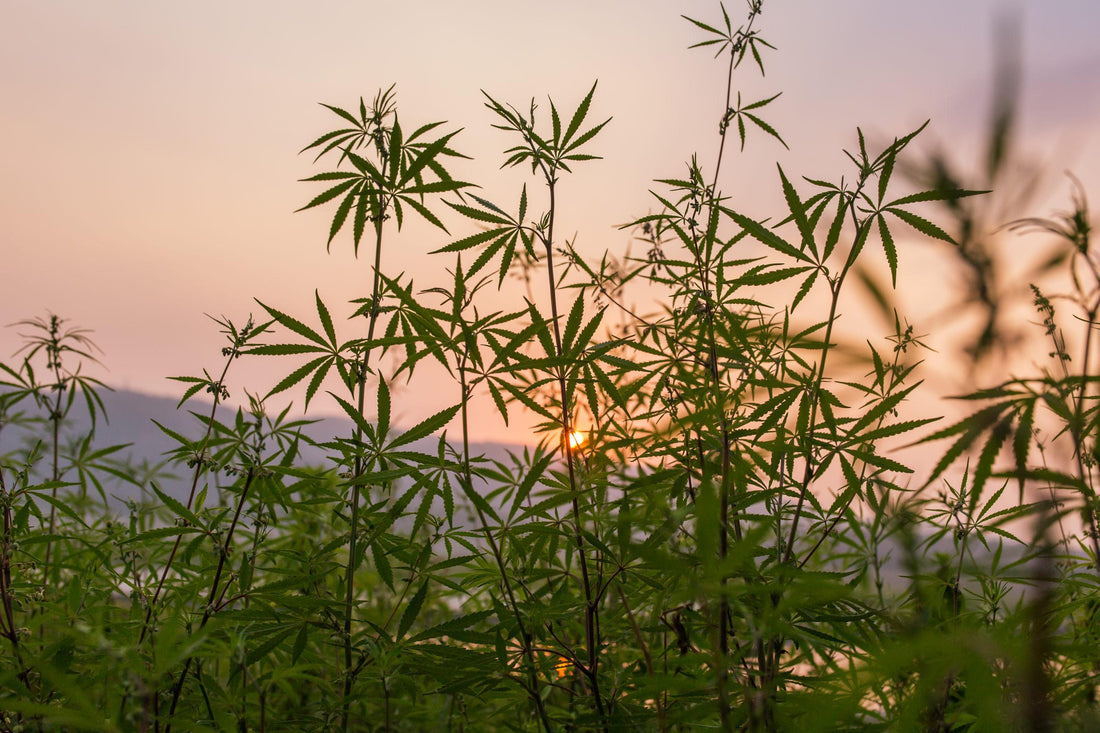
Hemp In India: Exploring The Growing Hemp Industry In India
Share
Recently, we got in touch with Mansi Shah of Hemp Fabric Lab, to learn more about hemp in India.
Hemp Fabric Lab makes innovative textiles that are either 100 percent hemp or blend hemp with fabrics like organic cotton, Tencel, silk, and wool.
As hemp activists, we’re always striving to make things better where we are. Often keeping our focal points on concerns of our country and what we can do within our local communities. Similar efforts are being made across the globe.
Considering hemp grows naturally in India, it comes as no surprise this resource has been used for generations. But what about the modern hemp industry?
HEMP IN INDIA: A GROWING INDUSTRY
“The modern hemp industry in India is at a highly nascent stage,” Shah explained, “even though, paradoxically, the use of hemp fibre and seed for a range of applications — rope, fuel, food — has been commonly acknowledged for several centuries in India’s rural communities.”
A growing number of agriculture training programs and practices are spreading across farming communities to spread knowledge of hemp. Similar to the guidelines set by the Farm Bill in the U.S., India’s goal is for all hemp grown contain less than 0.3 percent THC.
“Over the past half a decade, the interest in and demand for hemp-based products is on the rise, as may be seen with the increase in the number of women artisans and weavers in rural Himalayan villages,” Shah continued. “[those villages] have increased the quantity and quality of indigenous hemp handloom products, such as shawls, stoles, accessories.”
According to Hemp Today, investers recently poured around $150 million USD into the Indian Industrial Hemp Association. Not only is the IIHA hoping to expand on this booming global industry, but they’re also seeking to incorporate more native Indian hemp strains. Unfortunately, most wild hemp in India contains above 0.3 percent THC. Therefore, the association is seeking to raise the federal limit to 1.5 percent THC.
LAWS AND REGULATIONS SURROUNDING HEMP IN INDIA
It’s interesting to note that the county’s laws surrounding hemp have been looser than that of America’s for the past few decades.
India’s Narcotic Drugs & Psychotropic Substances Act (NDPS) of 1985 allows state governments the freedom to establish their own policies in terms of commercial cultivation. That is, “as long as they provide verifiable scientific and operational evidence that hemp cultivated shall not be diverted for misuse.”
Still, there remains strict guidelines in accordance to the federal government. So much so, only two states in India — Uttarakhand and Uttar Pradesh — have developed an official set of policies governing the research and cultivation of hemp.
Of course, these efforts can be seen as similar to America’s recent hemp accomplishments. However, the biggest difference is India’s been able to grow hemp legally since 1985, as long as all laws are followed.
It’s due to this and efforts made by IIHA which have allowed for India to explore the different products hemp can create. According to HomeGrown, successful Indian hemp companies include foods and drinks and, of course, fabrics for clothing. In some ways, hemp in India seems more diverse than the ever-growing CBD market here in America.
Yet, the interesting aspect of all this is India’s demand for hemp didn’t grow until recent years.
INTEREST IN SUSTAINABLE FASHION
Hemp Fabric Lab came into the picture when they noticed the Indian textile industry lacked easy access to natural fabrics. With that came a demand for sustainable fashion.
However, unlike other fabric companies, Hemp Fabric Lab offers customers the option to purchase a few meters of fabric. They did not want to force individual creators and small companies into minimum order quantities.
“Early on, we also focused strongly on becoming a brand name, with strong market, goodwill, and credibility,” Shah proudly told us. “We continue to work towards that goal through the kind of collaborations we do with [other] brands, as well as our social media voice.”
These kind of sales not only allow for other companies to develop their own sense of fashion, but for the fashion industry as a whole to start incorporating hemp.
RE-IMAGINING INDIA’S AGRICULTURE
“Agriculture in India is at an inflection point,” Shah said. “With a litany of problems plaguing the agrarian rural backbone of the nation.”
These problems range anywhere from an overdependence on intensive commercial crops (such as cotton and sugarcane) to socio-economic factors causing people to leave the countryside and move into the cities. In turn, these leaves rural parts of India ultimately unproductive.
Yet, through all the complications, Shah and her team believe hemp can be a solution to India’s agriculture.
“With hemp’s short cultivation cycle less requirement of water and agriculture inputs, combined with the price premium which can be commanded in the marketplace for hemp raw material and hemp finished products, it’s become increasingly evident to farming communities, government, and industry that hemp is a requirement for the heart of India’s next green revolution.”
Hemp’s ever-growing popularity in India is noteworthy. As is happening across the world, there’s a demand for organic materials and foods. India is no exception and many have been seeking out hemp’s eco-friendly material.
“Over the course of the past few years, there has been an increase in the number of organizations which are beginning to work with and trade hemp-based products in industry segments. However, India’s contribution to the global hemp market is currently less than 0.5 percent. We don’t view the upsurge in companies as competition — rather, we choose to view it through the lens of establishing a burgeoning industry.”
HEMP FASHION PROMOTES ACCEPTANCE OF HEMP
One of the greatest ways to promote hemp is by allowing hemp to have an influence over the fashion industry. This is the final goal of Hemp Fabric Lab which we discussed.
“Our core offering is a wide range of hemp fabrics in woven, knits, and handloom varieties,” Shah told us. “Our parent company Bombay Hemp Company [or BOHECO] largely manages all aspects of industrial hemp from food to textiles to clothing to medicine.”
This cooperation Hemp Fabric Lab and BOHECO have found hopes to develop clothing which will make its way amongst the masses.
“Our B-Label clothing range comprises of semi-formal work wear and casual wear all made 100 percent from hemp, hemp and organic cotton, as well as hemp and lyocell blends that do well in a tropical country like India.”
Their main target is people between the ages of 21 and 50 with a focus on clean, easy-to-wear silhouettes that will allow people for easy, on-the-go clothing.
HOPE FOR THE FUTURE
As Shah mentioned, the hemp industry in India is still just coming into existence. With that, everyone involved has a lot of work to do. Not only in growing this industry, but also in teaching the rest of the world the many benefits of hemp.
“We’re hopeful, having had the support of the Indian government and thought leaders,” Shah said. “It has immensely helped BOHECO in its 6 year journey as an agro-socio enterprise looking to change the perception of industrial hemp.”
And what better place for this industry to occur than India? 60 percent of all districts in the country see natural, wild-grown cannabis. Furthermore, the link between India’s historic culture and hemp is strong. With the input of “modern technology to improve the quality of hemp and its base raw material, it wouldn’t be exaggerated to say that we shall soon see India reclaim its natural piece at a leadership level within the global hemp industry.”


